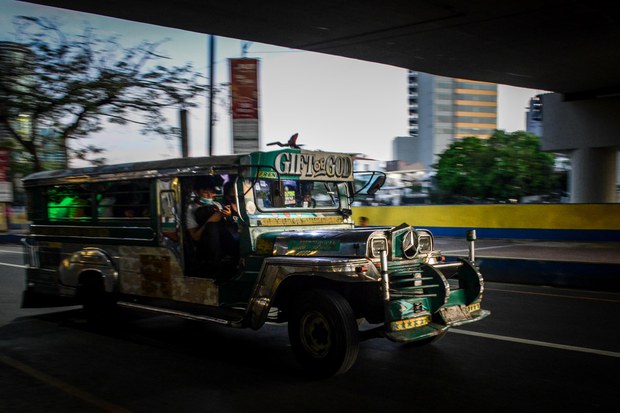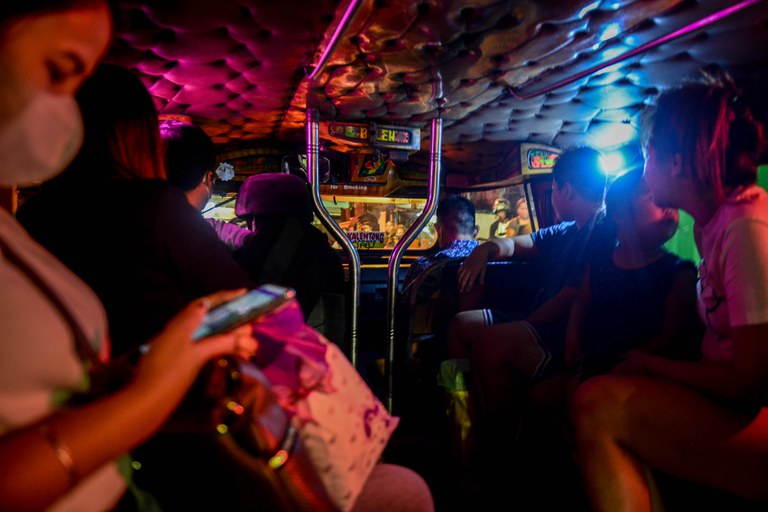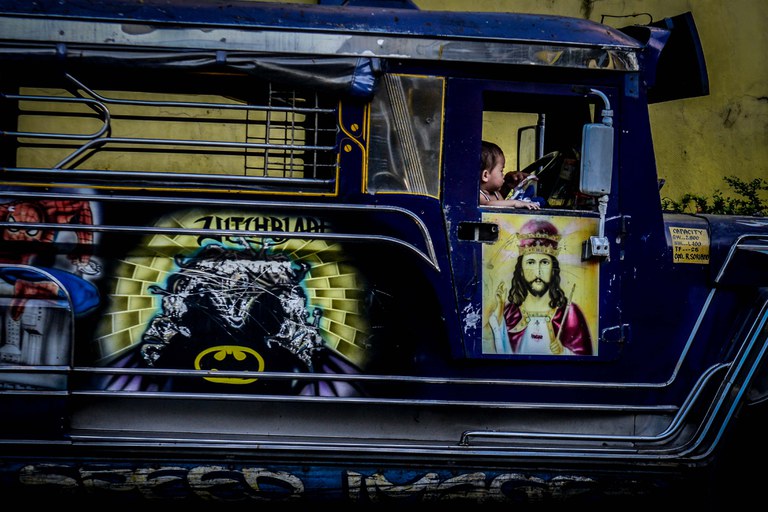Jeepney transport strike ends in the Philippines
2023.03.08
Manila
 A jeepney moves during the rush hour in suburban Mandaluyong City, Metro Manila, March 6, 2023. This type of mini-bus, a blend of jeep and jitney, often is colorfully decorated and has served as the most common means of public transportation for Filipinos since the end of World War II.
A jeepney moves during the rush hour in suburban Mandaluyong City, Metro Manila, March 6, 2023. This type of mini-bus, a blend of jeep and jitney, often is colorfully decorated and has served as the most common means of public transportation for Filipinos since the end of World War II.
Thousands of drivers in the Philippines on Wednesday ended their transport strike over government plans to phase out jeepneys, a cultural icon and one of the country’s cheapest modes of public transportation.
The strike, which began on Monday, largely paralyzed a portion of the commuting Filipino public, especially in Metro Manila, a megacity where the colorful vehicles are vital for transporting many people from its population of 14 million.
But transport union leaders reached the decision to cut short the planned weeklong work stoppage after three days, after being summoned to the presidential palace for a closed-doors meeting Tuesday.
“We are back on the roads again today,” Mar Valbuena, who leads the jeepney drivers’ union Manibela, told BenarNews.
The strike was called to protest against the government’s move to replace old public utility vehicles, including the diesel-powered jeepneys, with more costly modern mini-vans powered by engines that run on clean fuels.
The old PUVs, jeepneys in particular, have been deemed unsafe and environmentally harmful, but are part of the fabric of modern Philippine culture. They originated from Willys jeeps that were used in World War II and later reconfigured into mini-buses.
Valbuena, the union man, said drivers would “hold onto the statement of our beloved President Ferdinand ‘Bongbong’ Marcos Jr that the administration is open to studying and revising the [plan] to maintain the livelihood of drivers and operators.”

President Marcos, who was elected last year, said he had heard the jeepney drivers’ concerns.
“I think the problem they mentioned is that they might not be able to get loans to buy new vehicles. So, that’s what we are studying to make sure that no one will lose [their] job just because they cannot afford to buy an electric vehicle when the time comes, but we’re not there yet,” Marcos told reporters Wednesday.
The protesting drivers were invited the day before to Malacañang Palace where, Marcos said, their grievances were heard.
“I am grateful to them because I think they have made their point very clear that we need to carefully look and study this program,” the president said, assuring jeepney drivers that the government would put “an additional burden [on] our transportation workers.”
He noted that the government had extended the phaseout plan until the year’s end.
“I think that is enough time for us to do everything that needs to be done to fix the system of inspection and replacement of our jeepneys,” Marcos said.
Based on the original jeepney modernization plan, drivers had until June 30 to ply their routes using the old vehicles. Persistent protests however prompted the government to move the deadline to Dec. 31, 2023.

Drivers and union leaders said the modernization was too expensive for drivers who could barely make ends meet. Under the modernization plan, jeepney drivers are to bear the cost of new vehicles that each could amount to over 2 million Philippine pesos (U.S. $35,700)
They also claim that this high cost would force drivers to pass the burden onto consumers, which would eventually lead to higher jeepney fares all over the country.
Teofilo Guadiz, chairman of the Land Transportation Franchising and Regulatory Board (LTFRB), lauded the end of the transport strike.
“We have never wavered in asking our friends from MANIBELA and PISTON to sit down with us, to thrash out their concerns about the PUVMP and the modernization of the public transportation industry. We are glad they listened to our President,” Guadiz in a statement, referring to the PUV modernization program.
Guadiz also thanked Valbuena and Mody Floranda, president of the transport group PISTON, for sitting down with Marcos to “discuss how to improve even further the tenets” of the modernization program.
Guadiz said the discussions opened the door for stakeholders “to finally sit down and help each other come up with an effective public transportation modernization program that is responsive and inclusive not only of their needs but also that of the commuting public.”
Basilio Sepe contributed to this report from Manila.







